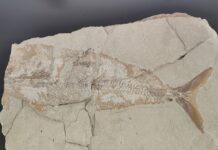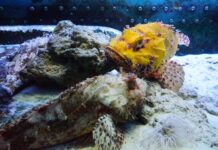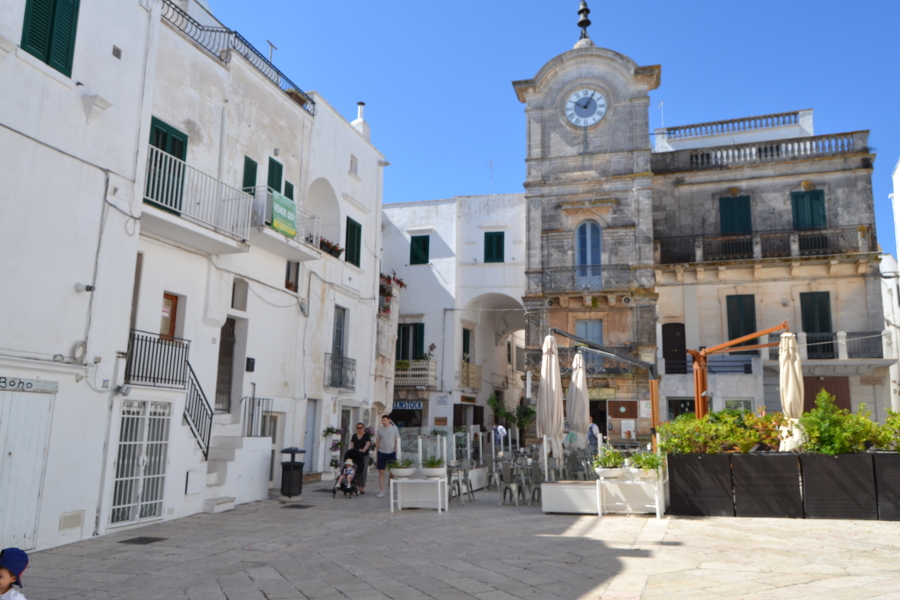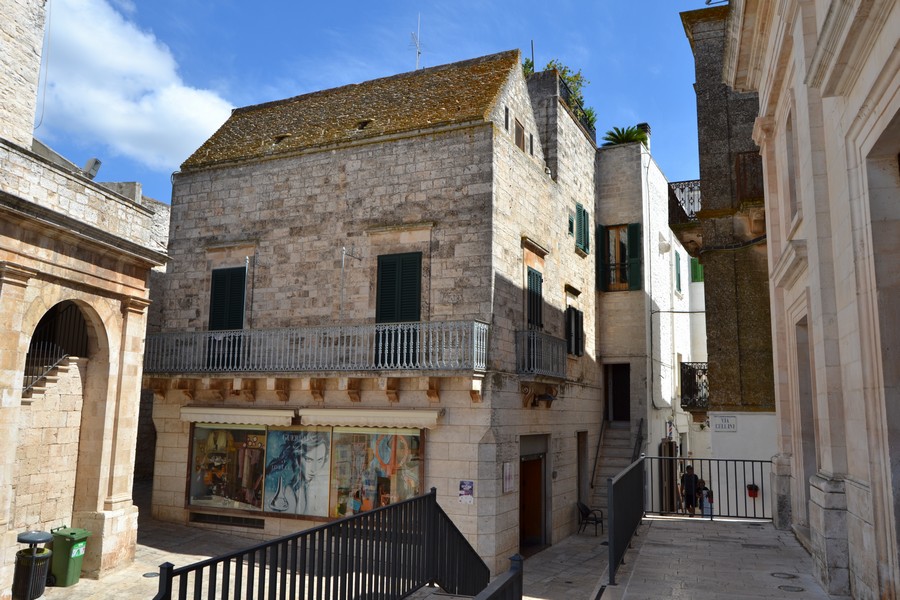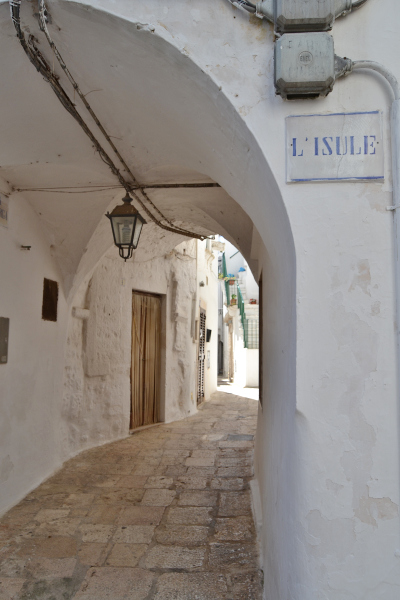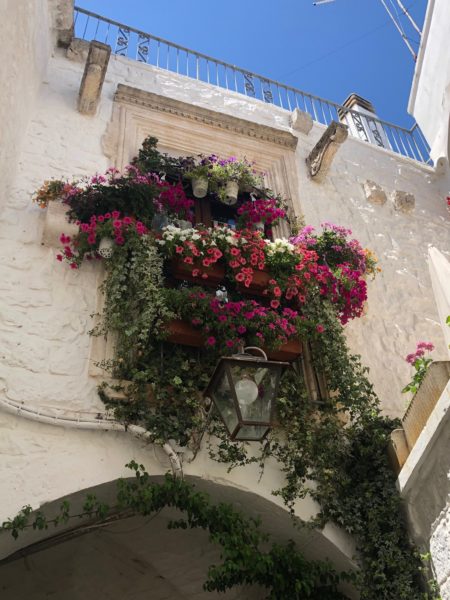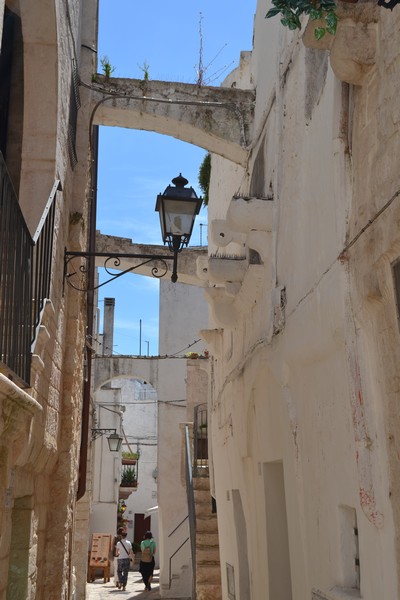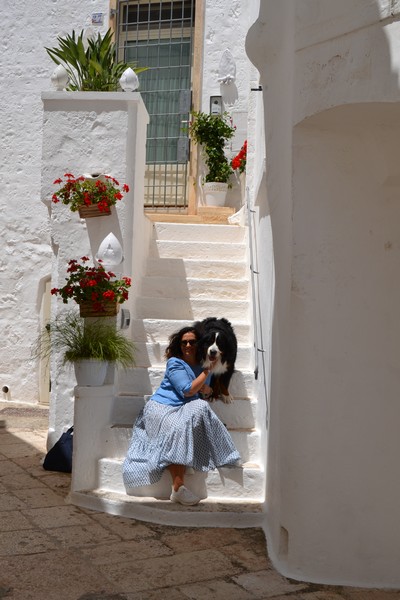For our walk between the town and the districts scattered throughout the area dotted with trulli, vines, olive trees and Mediterranean scrub, Cisternino welcomed us with its best livery: the intense blue of the sky and the bright green of the Valle d’Itria in splendid contrast with the immaculate whiteness of houses, alleys and small squares.

White view on the Valle d’Itria
The walking tour of the village, in which the Tourism Councilor Mario Saponaro accompanied us, started with one of those that are considered real terraces overlooking the magnificent panorama.

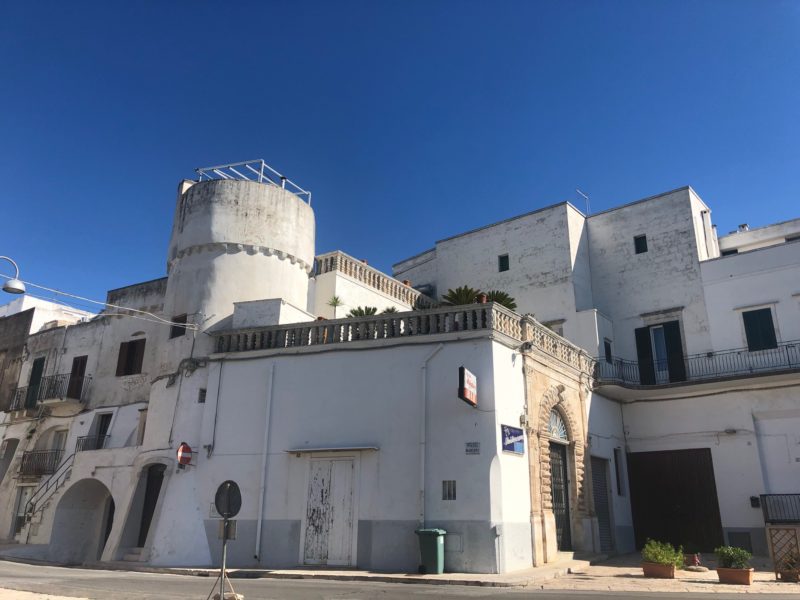
Cisternino is in fact one of the most fascinating natural balconies in the heart of the Valle d’Itria: from its three views, the one from where we started in the extra-mural area in front of the so-called Wind or Capece Tower and those of the municipal Villa and Pinewood, you dominate much of that magical portion of Puglia in which the trulli are the absolute protagonists.


And to underline this prerogative some benches placed in the most strategic points to admire the panorama have been painted red and have become – as the councilor Saponaro tells us – the place in which to withdraw with a selfie or to be photographed perhaps with a magnificent sunset fiery behind.
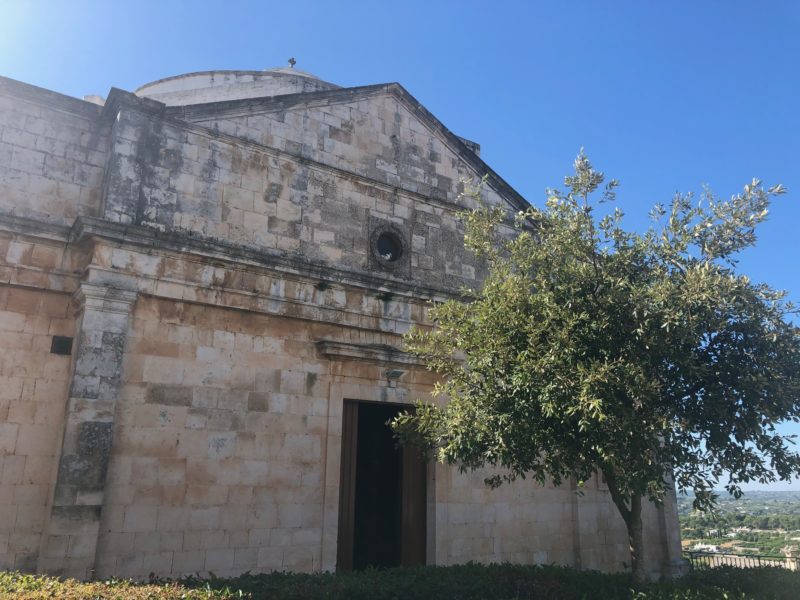
Our first visit, after admiring the enchanting postcard view, concerned the most modern church in Cisternino: the church of Christ, not surprisingly also called the New church. It was built in 1860 by the confraternity of the SS. Sacramento, and this has attracted its external shape, reminiscent of the Pantheon, while the interior has a central plan, with a dome made of small stones in a circumcentric manner, tracing the technique of the trulli.
It houses the statues of the Saints Medici in papier-mâché, a wooden sculpture of the crucified Christ and a canvas by Giuseppe de Giuseppe representing the Good Death, truly a work out of the ordinary, in which the painter portrays the moment of agony with the soul disputed by the devil wrapped up from the flames of the underworld and hidden under the bedside table while the Virgin flutters amidst the clouds among the cherubs and on one side stands the figure of the prelate arrived just in time for the extreme unction.

In the intricate nucleus of the village, formed by tall and narrow buildings between which open roads and narrow alleys like deep fissures that ensure coolness and shade even in the height of summer, you penetrate through the gap between the Torre Grande and the Mother Church where it stood Porta Grande.
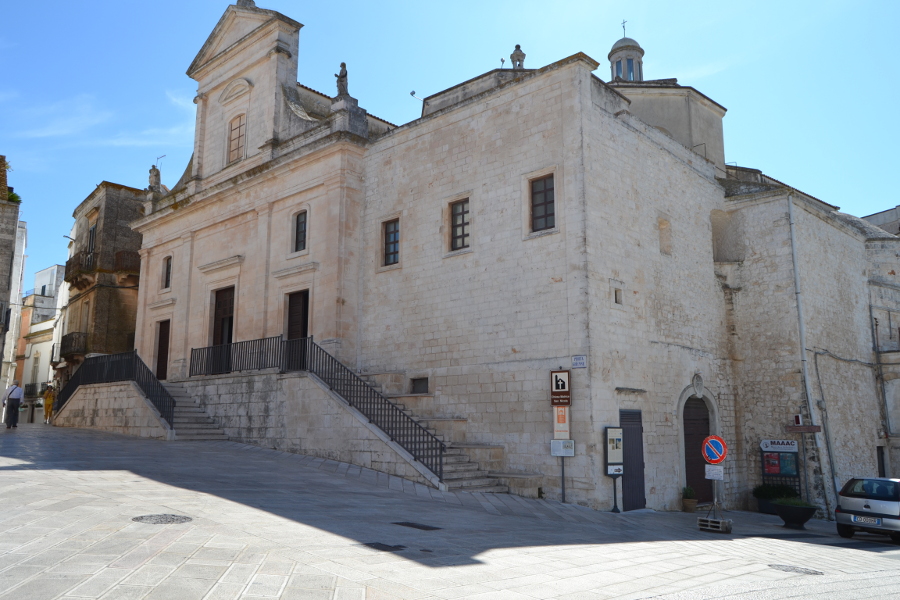
In 1800 the door was demolished while the façade of the church dedicated to St. Nicholas of Patara was rebuilt in the current neoclassical form and a porticoed forepart was added to the Tower, still standing on the built-up area.
A narrow main street joins the two doors, once only entrances to the city defended by high walls, leading towards Porta Piccola. At this point the walk can take two directions. Or follow the ring around the “land”, as the fortified cities were once called, carefully identifying what is still left of the walls between the houses and the buildings that face it like the two cylindrical towers of Angevin age.
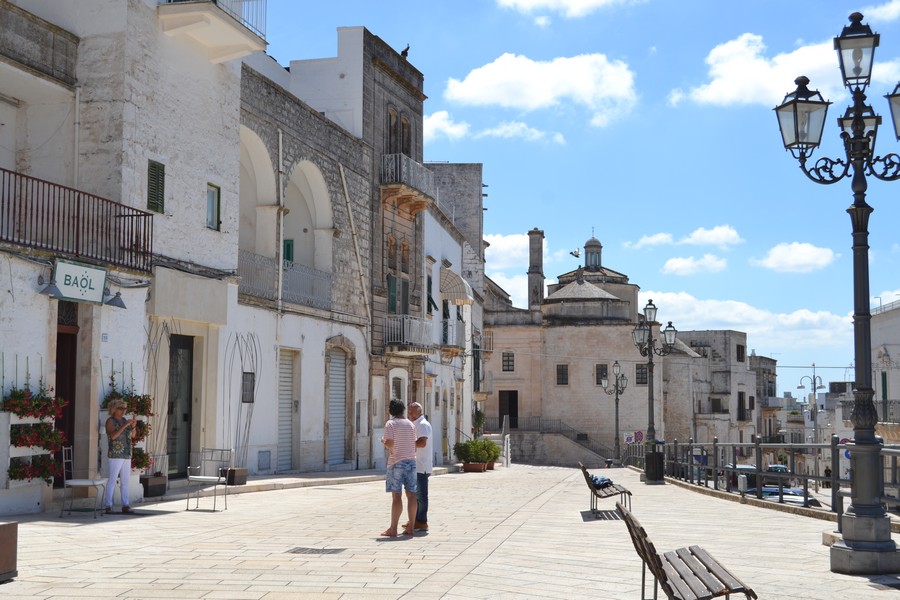
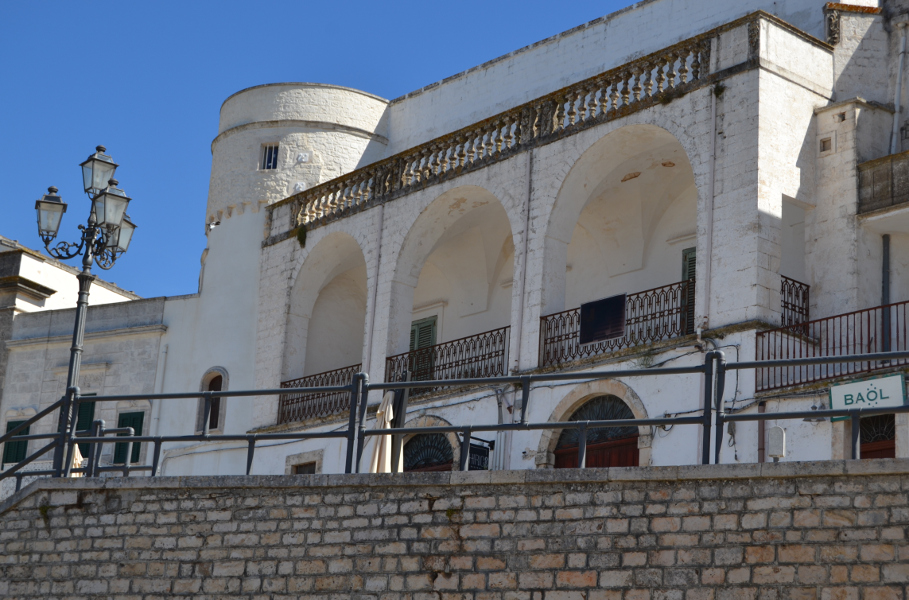
Or sinking into the intricate texture of the narrow streets of the five districts of the historic center, often retracing your steps because you are on a dead end street. But one choice does not exclude the other.
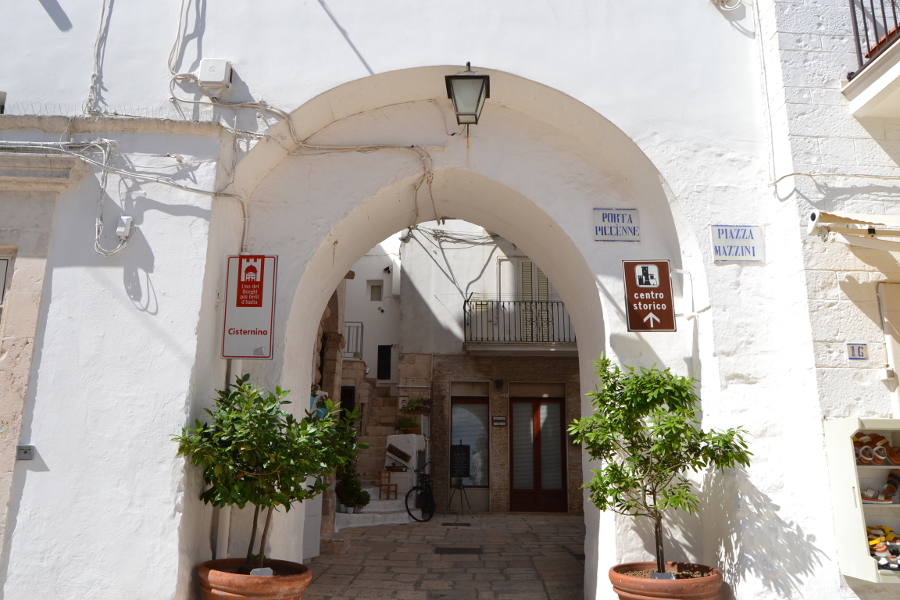
So we first crossed the heart of the village walking from one neighborhood to another, whose name stands out on the majolica plaques affixed to the white walls of the houses. Thus, from the Isule, a district bordered by streets on which many buildings overlook, including that of the Governor, Palazzo Ariani, Palazzo Soli and Palazzo Pepe, we reached Scheledde, which takes its name from the curbs that served to slow the pace of the wagons, and then we passed to U’ Pantèn which derives from the quagmire, a depressed area where rainwater was collected, and again to U Bùrie or village, the neighborhood outside the walls developed in the 16th century in which the palaces of the families stand most important and that is opposed to Bére Vecchie, that is the old village, the oldest district.
Feeling more and more enveloped by an atmosphere reminiscent of the East, among the white terraced houses equipped with external staircases, which made Cisternino deserve the epithet of city of stairs.
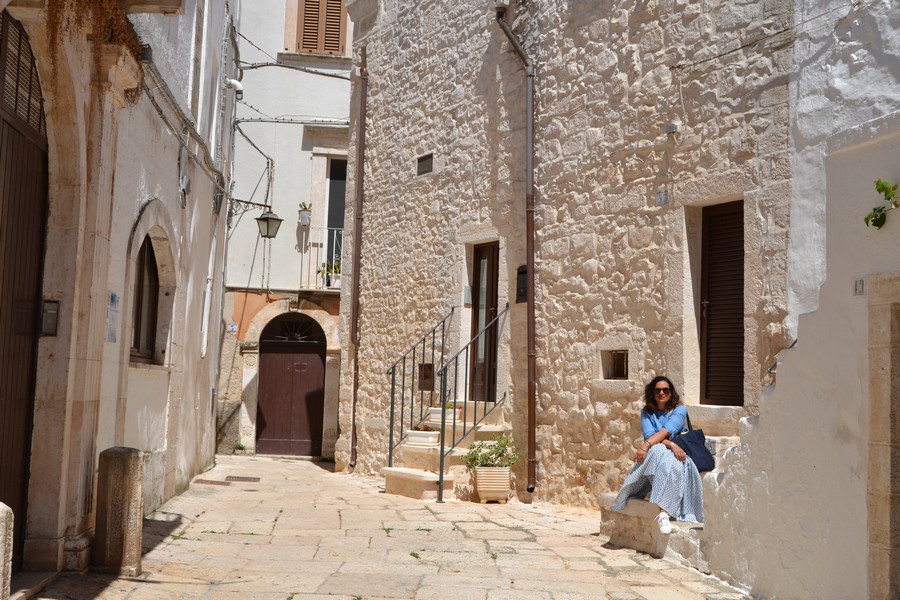
In the Scheledd district take the time to pass under the arches that characterize the neighborhood under which the Madonna and Child of Byzantine influence are preserved: among these is the Madonna of Monserrat, also called Madonna of the carpenters.

And crossing U ’Pantène in Piazza Pellegrino Rossi, look up to the balconies of the houses that overlook it decorated with ceramic pumes. The Pumo dè fiure, that is flower bud, is a symbol of prosperity and fruitfulness, but also of immortality, and this is why it is found on the facades of the palaces of the Cistranese lords: and the more it is decorated with leaves, the more it indicates how rich the family is.
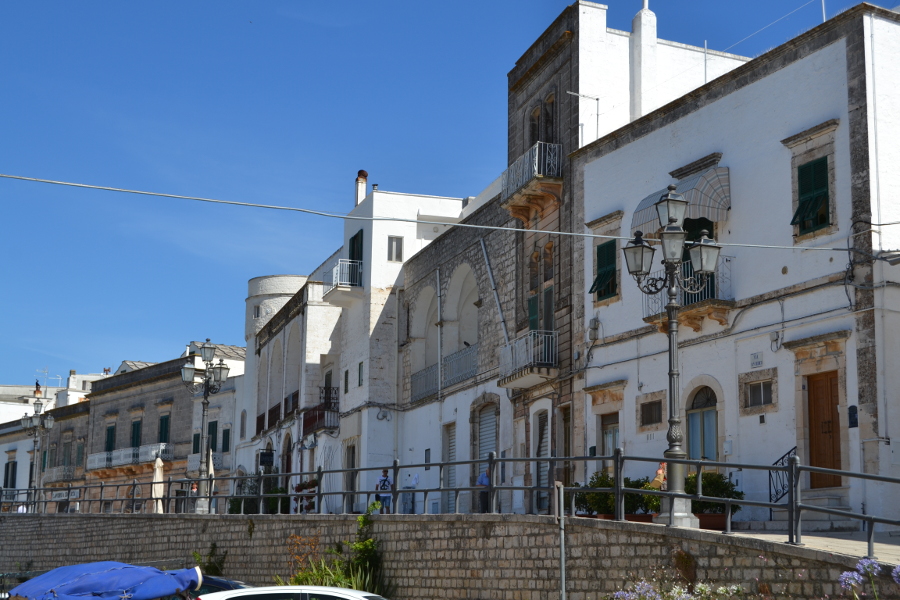
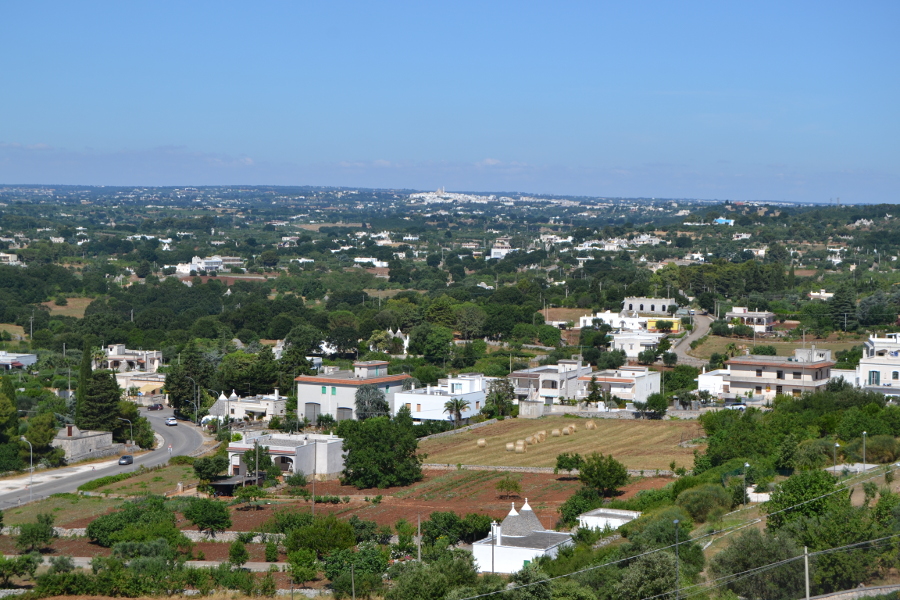
Then we continued our tour walking on what was once the base of the walls, enjoying the panoramic views of the countryside below and understanding better how in the past this elevated territory could have become a refuge for the people who founded the first nucleus of Cisternino.

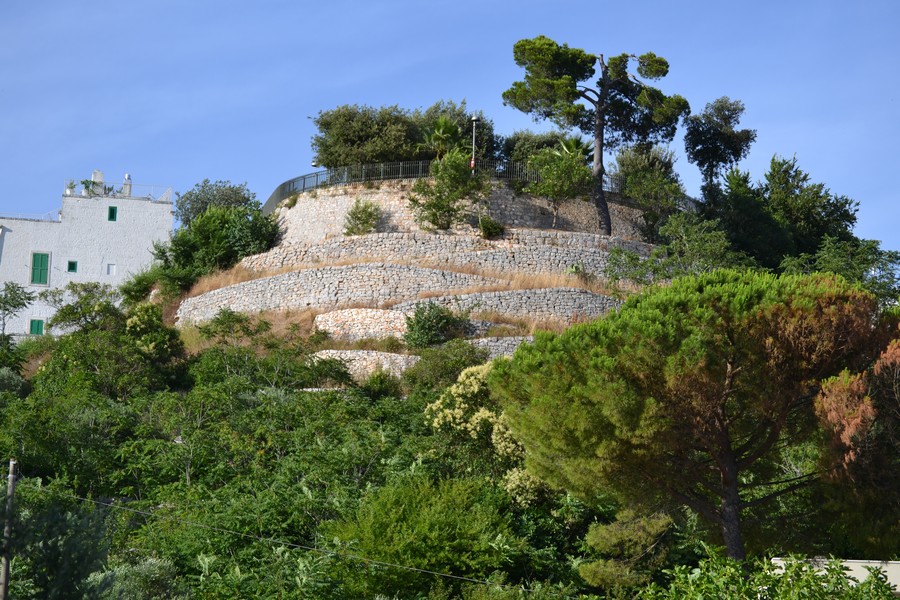
It was then Roman possession with the name of Sturnium and later part of the Byzantine dominion that succumbed to the Norman one. Precisely in this period, the hamlet became a fief of the diocese of Monopoli and since then the history of Cisternino and the Cistranese, as its inhabitants are called, has always been closely linked with that of the bishops of Monopoli, with brief interludes including we remember that of the years in which it belonged to Venice (from 1495 to 1509) and the domination of the hated, as seen by the population of the time as tyrants, prince Giovanni Antonio del Balzo Orsini and of the count, our countryman, Gian Girolamo II Acquaviva of Aragon, known as the Guercio di Puglia.

To discover the oldest Cisternino, you must visit the archaeological area under the church of San Nicola di Patara, the Mother Church. Discovered at the beginning of the new century, it is an underground church, built around the year one thousand and dedicated as the “new” one, to St. Nicholas. If, like us, you are accompanied by a furry friend in the walk, do not give up the visit because he will be able to enter.
 The main façade of the present Mother Church was completely rebuilt in 1848 and is very linear, with two statues of saints in prayer at the corners. Inside, with three naves, there are two chapels: the Rosary and the Blessed Sacrament. The first contains a sculpture attributed to the school of Stefano da Putignano, but it is the one in the center that attracts all the attention: it is the famous “Madonna with Child and offerers” of 1517, known as the Madonna del Cardellino, one of the most prestigious works of the Apulian Renaissance.
The main façade of the present Mother Church was completely rebuilt in 1848 and is very linear, with two statues of saints in prayer at the corners. Inside, with three naves, there are two chapels: the Rosary and the Blessed Sacrament. The first contains a sculpture attributed to the school of Stefano da Putignano, but it is the one in the center that attracts all the attention: it is the famous “Madonna with Child and offerers” of 1517, known as the Madonna del Cardellino, one of the most prestigious works of the Apulian Renaissance.
But we were surprised to discover that it is not San Nicola, to which the most important church of the village is named, the patron saint of Cisternino, but the mother-son couple of Santa Giulitta and San Quirico, who in the XVII century freed the country from the plague that scourged the whole of Puglia.

The tour in the village inserted among the most beautiful in Italy, waiting to discover the districts, ended in Piazza Vittorio Emanuele II known as Piazza dell’Orologio, thanks to the tower that defines its profile, among the most immortalized in the Valle d’Itria. And we did not escape the usual photo.
In collaboration with the Municipality of Cisternino

With the support of the Banca di Credito Cooperativo di Conversano




